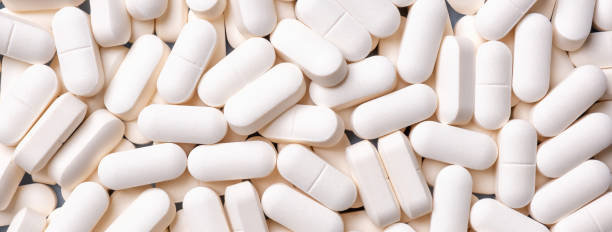Can Modafinil Help With Recovery After a Traumatic Brain Injury (TBI)?
Traumatic brain injury (TBI) can leave lasting effects on thinking, memory, alertness, and recovery. One of the most common and challenging symptoms is excessive daytime sleepiness (EDS) and ongoing fatigue. These problems can lower quality of life and make rehabilitation harder.
Modafinil, a medication originally approved for conditions like narcolepsy, has been studied as a possible treatment to help people with TBI stay more alert. But how strong is the evidence?
Understanding Traumatic Brain Injury
A TBI is a disruption of normal brain function caused by an external force, such as a fall, a motor vehicle crash, or a sports-related injury (Capizzi et al., 2020). After TBI, many people experience EDS and fatigue. These symptoms are more than just tiring; they can slow down rehabilitation and interfere with daily functioning.
Sleep–wake disturbances are common, affecting about 30 to 70 percent of patients depending on the type and severity of the injury (Ng & Lee, 2019). EDS after TBI is linked to problems with brain chemicals such as dopamine and orexin, which regulate wakefulness.
What Is Modafinil?
Modafinil is a wakefulness-promoting medication. The FDA approved it for excessive sleepiness linked to narcolepsy, obstructive sleep apnea, and shift work disorder (U.S. Food and Drug Administration, 2015).
It works mainly by blocking dopamine transporters, increasing dopamine levels in parts of the brain involved in alertness (Kumar, 2008). Unlike amphetamines, it usually does not cause euphoria or hyperactivity, but it still has potential for misuse (Greenblatt & Adams, 2023).
What Does the Research Show for TBI?
Evidence from Studies
- Modafinil trials: In a randomized trial of up to 400 mg daily, modafinil did not consistently improve fatigue or sleepiness, though some improvement was noted at 4 weeks. Insomnia was more common in those taking modafinil (Jha et al., as summarized in Borghol et al., 2018).
- Armodafinil trial: In a 12-week study, 250 mg of armodafinil improved objective sleep latency, meaning people stayed awake longer during testing. However, fatigue scores did not significantly improve compared with placebo (Menn et al., 2014).
- Systematic review: A review of 23 studies found mixed results, with modest improvements in EDS but inconsistent results for fatigue (Borghol et al., 2018).
Mechanistic Rationale
Modafinil is thought to:
- Promote wakefulness through dopamine transporter inhibition.
- Support attention and executive function, which are often affected after TBI.
- Have less overstimulation compared to other stimulants (Kumar, 2008).
Because TBI can disrupt dopamine and orexin pathways, these effects may help counteract post-injury sleepiness (Ng & Lee, 2019).
Benefits and Limitations
Possible Benefits
- May reduce EDS when other approaches fail.
- Could improve engagement in rehabilitation by helping patients stay awake.
- May support cognitive function in some individuals.
Limitations
- Mixed results for fatigue improvement.
- Some patients experience side effects such as headache, insomnia, or anxiety (Menn et al., 2014).
- No large long-term studies in TBI populations.
Safety and Monitoring
According to the FDA (2015), modafinil is associated with several risks:
- Common side effects: Headache, nausea, nervousness, diarrhea, insomnia, and anxiety.
- Serious risks: Severe rash (including Stevens–Johnson syndrome), psychiatric symptoms, and rare hypersensitivity reactions.
- Drug interactions: It reduces the effectiveness of steroidal contraceptives and can alter levels of drugs metabolized by CYP2C19, such as diazepam and phenytoin.
- Precautions: Use caution in patients with cardiovascular disease, psychiatric conditions, or history of stimulant misuse.
Clinical Considerations
Modafinil may be considered in select patients with TBI who have disabling EDS that does not improve with other strategies. Before prescribing, clinicians usually:
- Rule out and treat sleep apnea or insomnia.
- Review medications that may cause sedation.
- Monitor blood pressure, mood, and sleep patterns during treatment.
Conclusion
Modafinil shows promise for reducing EDS after TBI, but its benefits for fatigue and long-term recovery remain unclear. Current evidence suggests it may be a helpful add-on in rehabilitation for carefully chosen patients, but it is not a cure. More large-scale, long-term studies are needed.
Frequently Asked Questions
Can I take modafinil at night?
No. Modafinil is designed to improve daytime alertness. Taking it late in the day or at night can cause insomnia (U.S. Food and Drug Administration, 2015).
Does modafinil cure fatigue after TBI?
No. Studies show mixed results. It may help with EDS, but fatigue is often due to multiple factors and may not fully respond (Borghol et al., 2018).
Is modafinil safe for long-term use after TBI?
Long-term safety data in TBI patients are limited. Some patients may use it long term for other conditions under medical supervision, but regular monitoring is important (Greenblatt & Adams, 2023).
Do I need a prescription for modafinil?
Yes. Modafinil is a controlled substance in the United States. It must be prescribed by a licensed healthcare provider.
References
- Borghol, A., Aucoin, M., Onor, I., Jamero, D., & Hawawini, F. (2018). Modafinil for the improvement of patient outcomes following traumatic brain injury. Innovations in Clinical Neuroscience, 15(3–4), 17–23. https://www.ncbi.nlm.nih.gov/pmc/articles/PMC5906085/
- Capizzi, A., Woo, J., & Verduzco-Gutierrez, M. (2020). Traumatic brain injury: An overview of epidemiology, pathophysiology, and medical management. Medical Clinics of North America, 104(2), 213–238. https://doi.org/10.1016/j.mcna.2019.11.001
- Kumar, R. (2008). Approved and investigational uses of modafinil: An evidence-based review. Drugs, 68(13), 1803–1839. https://doi.org/10.2165/00003495-200868130-00003
- Menn, S. J., Yang, R., & Lankford, A. (2014). Armodafinil for the treatment of excessive sleepiness associated with mild or moderate closed traumatic brain injury: A 12-week, randomized, double-blind study followed by a 12-month open-label extension. Journal of Clinical Sleep Medicine, 10(11), 1181–1191. https://doi.org/10.5664/jcsm.4196
- Ng, S. Y., & Lee, A. Y. W. (2019). Traumatic brain injuries: Pathophysiology and potential therapeutic targets. Frontiers in Cellular Neuroscience, 13, 528. https://doi.org/10.3389/fncel.2019.00528
- U.S. Food and Drug Administration. (2015). PROVIGIL® (modafinil) tablets, for oral use, C-IV [prescribing information]. U.S. Department of Health and Human Services. https://www.accessdata.fda.gov/drugsatfda_docs/label/2015/020717s037s038lbl.pdf
- Greenblatt, K., & Adams, N. (2023). Modafinil. In StatPearls [Internet]. Treasure Island (FL): StatPearls Publishing; 2025 Jan–. Retrieved from https://www.ncbi.nlm.nih.gov/books/NBK531476/








